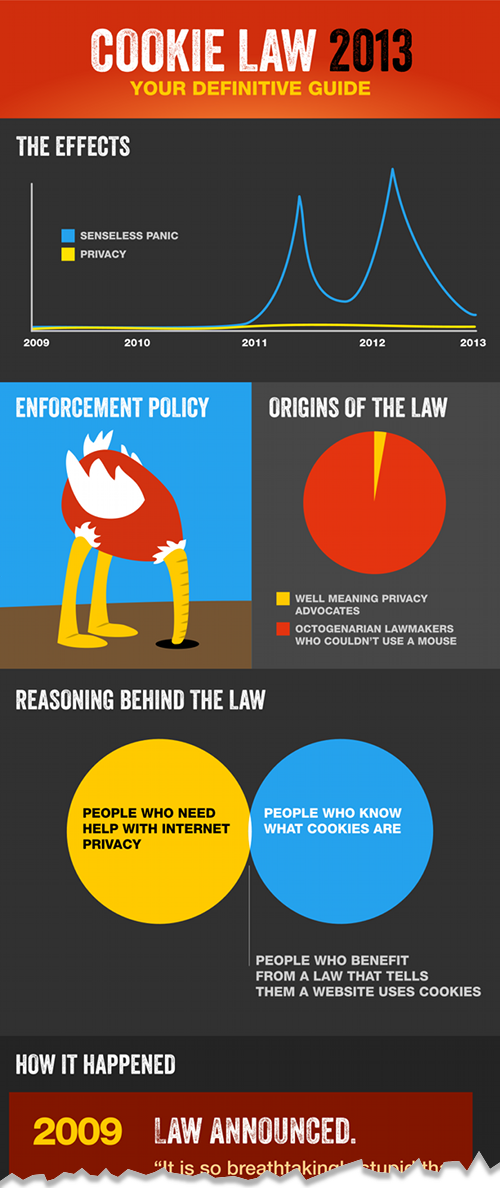Blog posts tagged privacy
What was all the EU cookie fuss about?
So... remember the EU cookie law? This time last year it was big news, as companies large and small scrambled to understand the implications and avoid potential fines of up to £500,000.
Cookies are small bits of data used to identify visitors and provide them with a better experience on a website - for instance by keeping them logged in or tracking the pages they visit. Virtually every web page uses them.
The EU cookie law aimed to protect people by making them more aware of what cookies are being set as they use the internet.
Opt-ins cost time and money
Technical and legal experts alike agreed that the law required websites to seek consent from visitors before setting any cookies on their computers. Companies spent time and money getting ready for the law, many implementing pop-ups and overlays which users have found irritating and annoying.
However, it turns out there are two key problems with this approach:
- When people arrive on a website, they want to find information, not worry about cookies. This means many visitors ignore the message altogether, thus failing to opt-in.
- As a result, website owners can't see accurate visitor statistics (because analytics tools rely on cookies), and visitors miss out on functions that use cookies.
It's an unsatisfactory experience for both parties.
The end of cookie opt-ins
Now, it seems like all that effort to create opt-ins might have been unnecessary. Because at the end of last month, the Information Commissioner's Office (that's the body with the job of enforcing the law in the UK) announced it was going to remove the opt-in from its website and start setting cookies as soon as soon as visitors arrived. In addition, the site:
- Has a banner at the bottom of the page to let visitors know cookies are being used.
- Has a page listing cookies in use and a button to delete non-essential cookies.
If that's good enough for the ICO, then surely it must be good enough for the rest of us. And with little evidence to suggest that a lack of an opt-in damages visitor confidence or trust, the obvious move now is for businesses that have implemented an opt-in to remove it.
What's your reaction?
We could offer our own comment on this change in approach, but instead let's turn to Silktide, a software company that's created this great infographic summarising the cookie law so far. Click the infographic to see the full version:
See the full infographic >>
How have you interpreted the cookie law on your website? Will you remove your opt-in message too?




